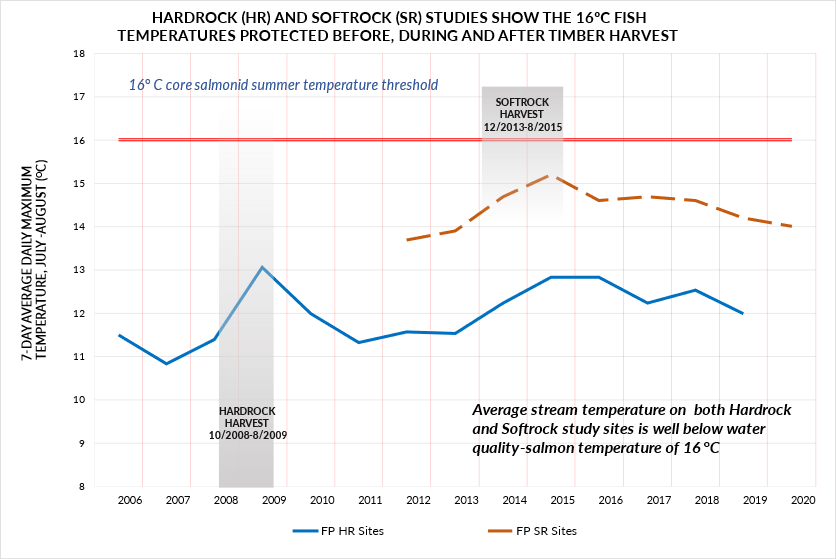A new University of Washington study has measured the impact of Olympia’s proposal to expand streamside buffers along non-fish-bearing perennial (Type Np) streams in western Washington. The findings show steep losses for forest landowners, mills, and rural communities. Water temperatures remain cool, well below salmon-safe temperatures, but the cost is high. Download the report here: Economic Analysis of the Proposed Np Rule.
How the Study Was Done
Researchers used:
- 2019 Washington Forestland Database – parcel-level forest ownership, acres, and timber species
- 2025 state stream maps – rivers, streams, and wetlands
- Both current and proposed Np stream buffer rules
The main analysis assumed 60% of unmapped streams are Np streams nearest to fish-bearing waters — a middle-ground estimate.
Key Findings
- 4.1 billion board feet of timber lost — 5.1% of the private forest harvest base
- $1.8 billion in lost stumpage value
- $1.5 billion from large private owners (-7% harvest)
- $284 million from small forest landowners (-2.2% harvest)
- 204,000 acres of working forest shifted into permanent buffers
Hardwood Impacts
- Hardwood harvestable inventory down 4.6%
- Industry: -488 million board feet (-7.8%, $155 million)
- Small landowners: -266 million board feet (-2.7%, $72 million)
- Biggest losses in Pacific County and southwest Washington
Additional Costs Not Measured
- Higher logging costs from fragmented harvest areas
- Lost carbon market eligibility for buffer acres
- More road building to navigate around buffers
- Increased state payments to small owners (FREP)
- Mill closures and rural job losses from reduced timber supply
Why It Matters
This is not a minor policy change — it is a large-scale reduction to Washington’s working forest base. It would mean fewer logs for mills, fewer rural jobs, less tax revenue for schools and roads, and long-term harm to the state’s forest economy.
Click here to support working forests, not more set-asides – tell Olympia to stop the overreach.
